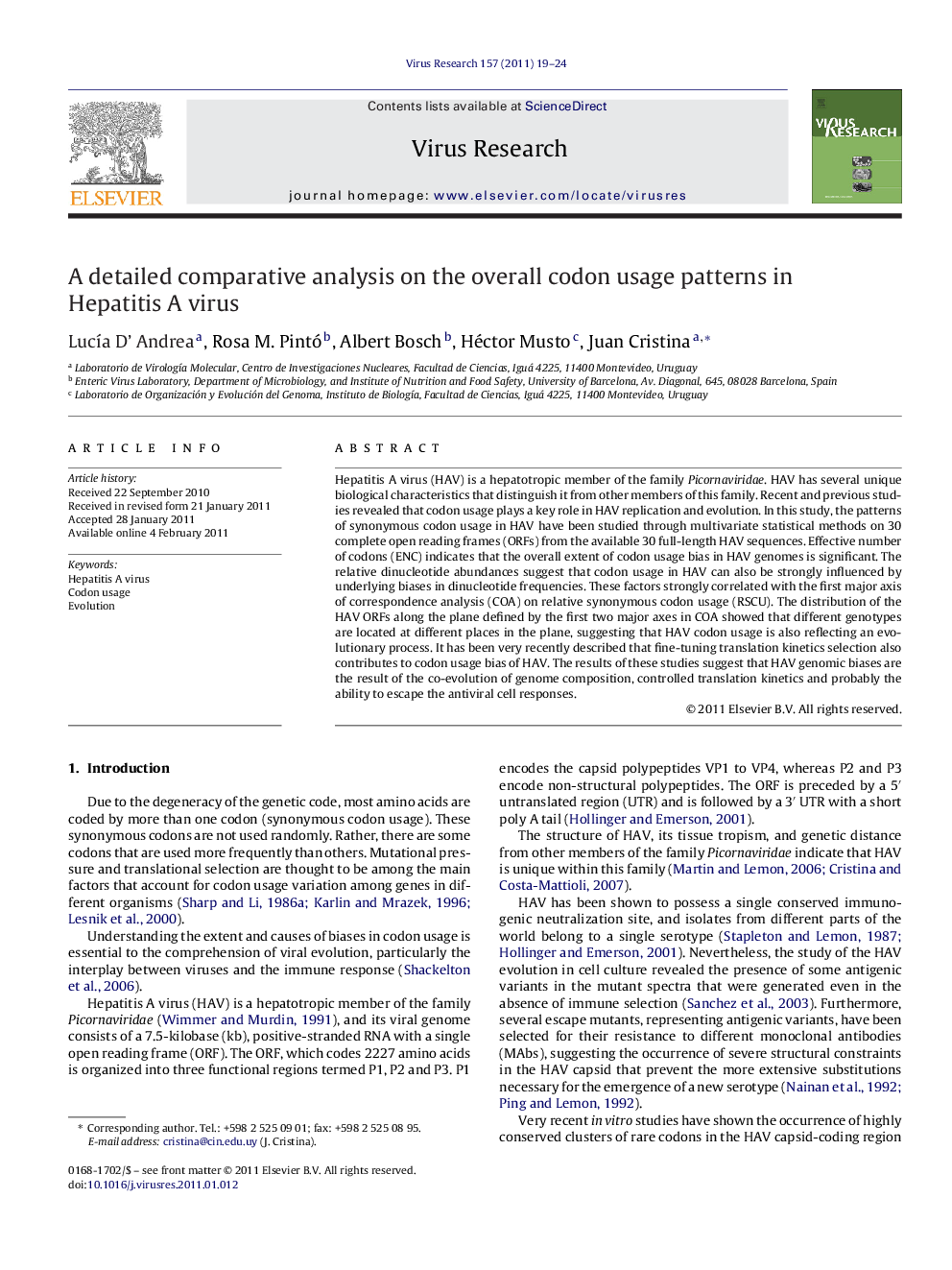| Article ID | Journal | Published Year | Pages | File Type |
|---|---|---|---|---|
| 6143472 | Virus Research | 2011 | 6 Pages |
Abstract
Hepatitis A virus (HAV) is a hepatotropic member of the family Picornaviridae. HAV has several unique biological characteristics that distinguish it from other members of this family. Recent and previous studies revealed that codon usage plays a key role in HAV replication and evolution. In this study, the patterns of synonymous codon usage in HAV have been studied through multivariate statistical methods on 30 complete open reading frames (ORFs) from the available 30 full-length HAV sequences. Effective number of codons (ENC) indicates that the overall extent of codon usage bias in HAV genomes is significant. The relative dinucleotide abundances suggest that codon usage in HAV can also be strongly influenced by underlying biases in dinucleotide frequencies. These factors strongly correlated with the first major axis of correspondence analysis (COA) on relative synonymous codon usage (RSCU). The distribution of the HAV ORFs along the plane defined by the first two major axes in COA showed that different genotypes are located at different places in the plane, suggesting that HAV codon usage is also reflecting an evolutionary process. It has been very recently described that fine-tuning translation kinetics selection also contributes to codon usage bias of HAV. The results of these studies suggest that HAV genomic biases are the result of the co-evolution of genome composition, controlled translation kinetics and probably the ability to escape the antiviral cell responses.
Related Topics
Life Sciences
Immunology and Microbiology
Virology
Authors
LucÃa D' Andrea, Rosa M. Pintó, Albert Bosch, Héctor Musto, Juan Cristina,
